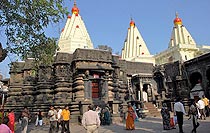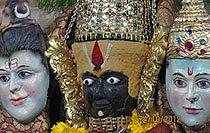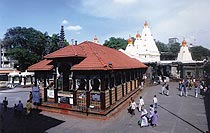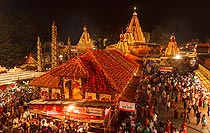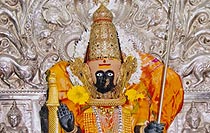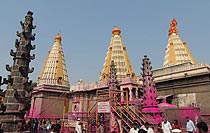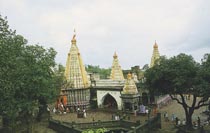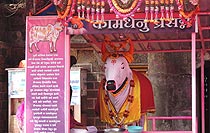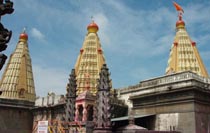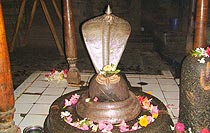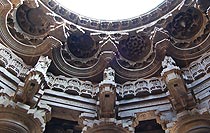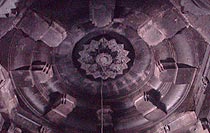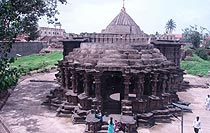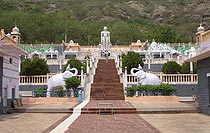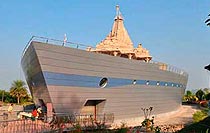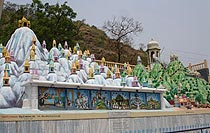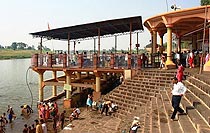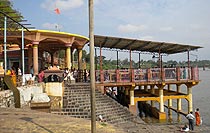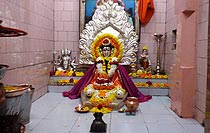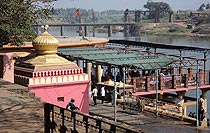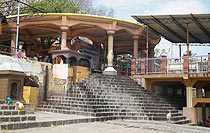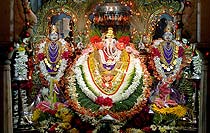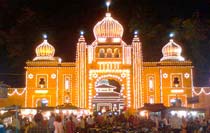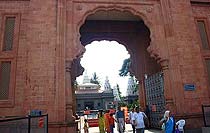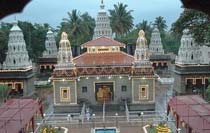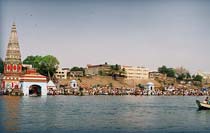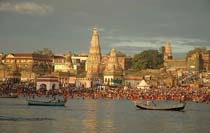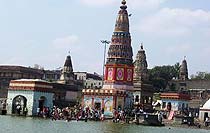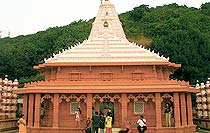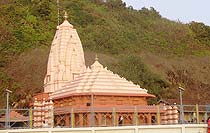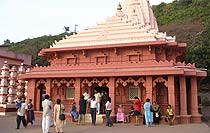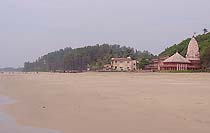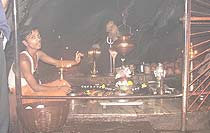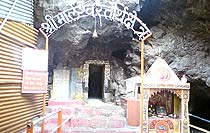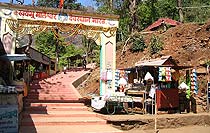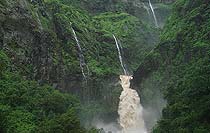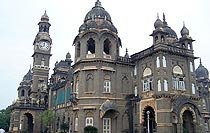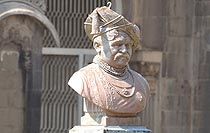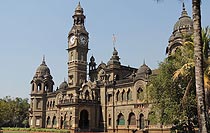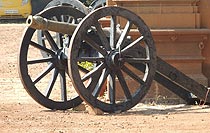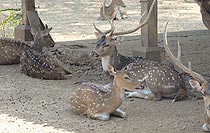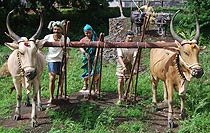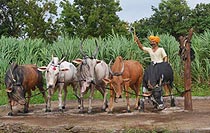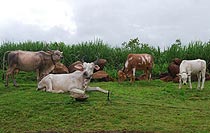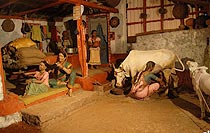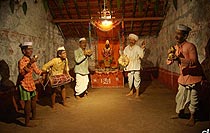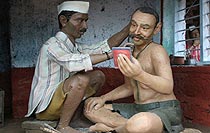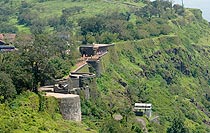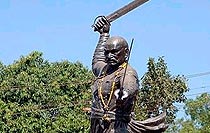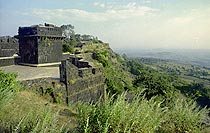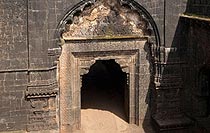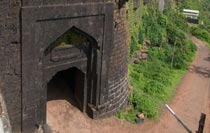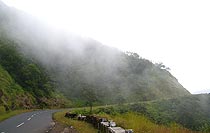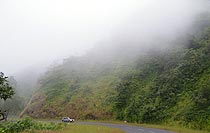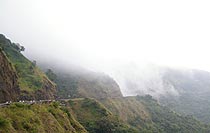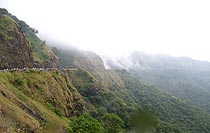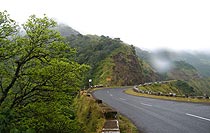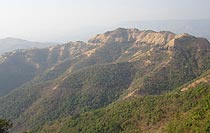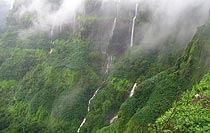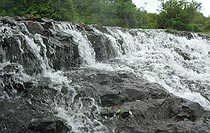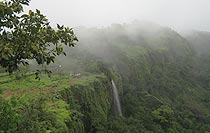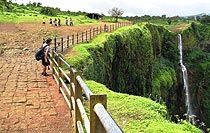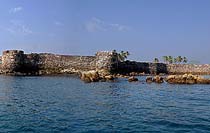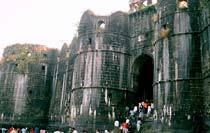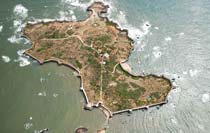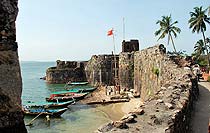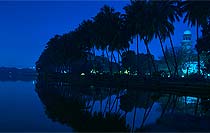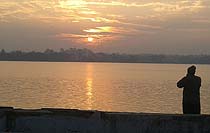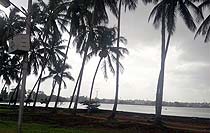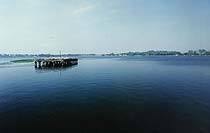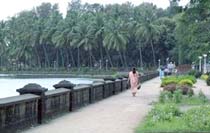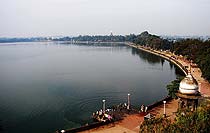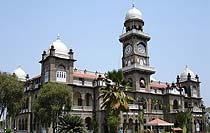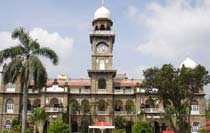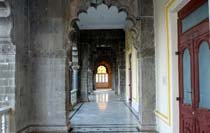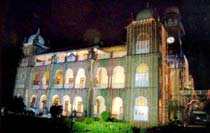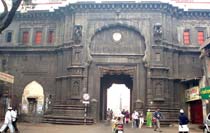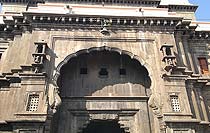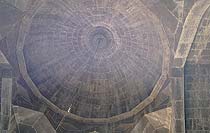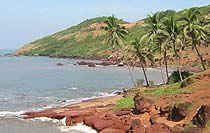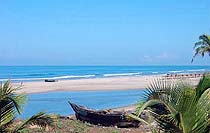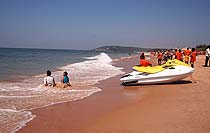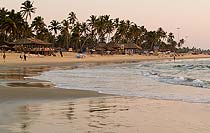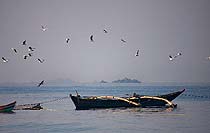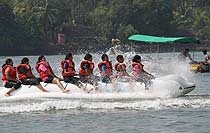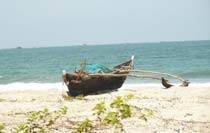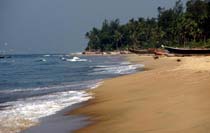Temples
- Mahalaxmi Mandir
- Jotiba [20 kms]
- Khidrapur [50 kms]
- Bahubali [20 kms]
- Narsobawadi [40 kms]
- Sangli Ganpati Mandir [50 kms]
- Audumbar [60 kms]
- Pandharpur Vitthal Mandir [170 kms]
- Ganpatipule [125 kms]
- Marleshwar [60 kms]
Museums
Hill Stations
Places to Visit
Nearby Locations
Kolhapur, known as Dakshin Kashi is one of the most prosperous and joyous city of India in Southern Maharashtra in western Ghats. Kolhapur, the town of goddess Mahalakshmi is gifted with an incredible archeological & cultural heritage, magnificent temples, monuments, forts, lakes and gardens. Kolhapur is world famous for Kolhapuri Chappals & Jaggery. Flushed with tourists all around the year ,city is equally famous for special Kolhapuri Misal and Kolhapur Tambda Pandhara Rassa and many more mouth watering delicacies.
Shri Mahalaxmi Temple, Kolhapur
The Shri Mahalakshmi Temple of Kolhapur in Maharashtra, India, is one of the Shakti Peethas also called Dakshin Kashi, listed in various puranas of Hinduism. According to these writings, a shakti peetha is a place associated with Shakti, the goddess of power. The Kolhapur peetha is of special religious significance, being one of the six places where it is believed one can either obtain salvation from desires or have them fulfilled. The temple takes its name from Mahalakshmi, the consort of Vishnu, and it is believed that the divine couple reside in the area.
The temple belongs, architecturally, to the Kannada Chalukya empire, and may have been first built circa 700 AD. Mounted on a stone platform, the image of the four armed and crowned goddess is made of gemstone and weighs about 40 kilograms. The image of Mahalakshmi carved in black stone is 3 feet in height. The Shri yantra is carved on one of the walls in the temple. A stone lion, the vahana of the goddess, stands behind the statue.
The crown contains an image of the Sheshnag — the serpent of Vishnu. In Her four hands, the deity of Mahalakshmi holds objects of symbolic value. The lower right hand holds a mhalunga (a citrus fruit), in the upper right, a large mace (kaumodaki) with its head touching the ground, in the upper left a shield (khetaka), and in the lower left, a bowl (panpatra).
Unlike most Hindu sacred images, which face north or east, the image of this deity looks west (Pashchim). There is a small open window on the western wall, through which the light of the setting sun falls on the face of the image for three days around the 21st of each March and September.
Daily Programme (Pooja)
| 4.00 a.m. | Opening of the Temple Entrance Gate. |
|---|---|
| 4.00 a.m. to 4.30 a.m | Ghantanaad (Ringing of the bell) |
| 4.45 a.m. | Opening of Main Door by the High Priest (Hakkadar Pujari) for that day. |
| 5.30 a.m. | Padhya Pooja (Washing the feet of the idol Goddess Mahalaxmi by Milk.) |
| 5.45 a.m. | Kakada Aarati of the Goddess Mahalaxmi. |
| 8.30 a.m. | Ghantanaad (Ringing of the bell) and Snan Abhishek (Bathing of the main idol. Goddess Mahalaxmi) |
| 9.30 a.m. | Aarati and Shankh Trith |
| 11.30 a.m. | Ghantanaad and Abhishek (Milk Bathing of the main idol. Goddess Mahalaxmi) |
| 12.30 to 1.00 p.m. | Aarati and Shankh Tirth |
| 1.30 to 2.30 p.m. | Alankar Pooja. Salankruti (i.e. Goddess is decorated with beautiful Gold ornaments, Sari and Blouse) This Pooja is kept upto 8.30 p.m. in the evening |
| 8.00 p.m. | Ghantanaad (Ringing of the bell) |
| 8.15 p.m. | Aarati |
| 8.30 p.m. to 9.00 p.m. | Mantrapushp and removing the Alankar (Gold ornaments.) and simple Pooja is performed |
| 10.00 p.m. | Ghantanaad (Ringing of the bell) |
| 10.15 p.m. | Shejarati (Last Aarti of the day.) |
| 10.30 p.m. | Temple's Doors are closed. |
Other Important Rituals Performed
- Every Friday at 9.30 p.m.- Devichi Palakhi (i.e. procession of the idol Goddess Mahalaxmi in Palainquin.)
- On every Chaitra Pratipada - Procession of the idol Goddess Mahalaxmi is carried out in Chariot and Palainquin at 9.30 p.m. (Nagar Pradakshana)
- Procession of the Idol Goddess Mahalaxmi is carried out in Palainquin on every full Moon (Poornima) of Ashwin, Kartik, Margshirsh, Paush and Magh at 9.30 p.m.
- Palakhi (Procession) of the idol Goddess Mahalaxmi is carried out in Palainquin, daily during Navratri Ashwin pratipada upto Dasara Festival.
- Mahaprasad (Delicious Food) is distributed to thousands of Devoties after 12.00 p.m. on Ashwin Poornima. (full Moon)
- KARTIK FESTIVAL - Starting from Narakchaturdashi to Kartik Poornima the Temple is opened in early morning at 2.00 a.m. and Kakada Aarati is performed.
- KIRNOSTAV - i.e. the rays of the Sun fall on the Idol Goddess Mahalaxmi during Sunset. Kirnostav Dates : November - 9, 10, 11, January - 31, and February 1,2.
- Abhishek and Kumkumarchan (Bathing the idol of Goddess Mahalaxmi with Milk and applying Kumkum on to the feets of the idol), are allowed to perform by male devoties only between 5.30 a.m. to 12.30 p.m.
KARTIK FESTIVAL
Starting from Narakchaturdashi to Kartik Poornima the Temple is opened in early morning at 2.00 a.m. and Kakada Aarati is performed.
KIRNOSTAV
i.e. the rays of the Sun fall on the Idol Goddess Mahalaxmi during Sunset.
Kirnostav Dates :नित्य कार्यक्रम ( पूजा विधी )
| पहाटेचे कार्यक्रम ( पूजा विधी ) | |
|---|---|
| पहाटे ४.०० वाजता | बाहेरील दरवाजा उघडणे. |
| पहाटे ४.०० वा ते ४.3० वा | घंटानाद |
| पहाटे ४.४५ वा | देवीचा मुख्य दरवाजा हक्कदार पुजारी उघडतात. |
| पहाटे ५.3० वा | देवीच्या चरणावर पुजारी दुध घालतात. ( पाध्यपुजा ) |
| ५.४५ वा. | देवीची काकडआरती |
| सकाळचे कार्यक्रम ( पूजा विधी ) | |
| सकाळी ८.3० वा. | घंटानाद आणि मुख्य देवीस स्नान व अभिषेक |
| सकाळी ९.3० वा | आरती आणि शंखतीर्थ |
| सकाळी ११.3० वा. | घंटानाद व मुख्य देवीस अभिषेक |
| दुपारचे कार्यक्रम ( पूजा विधी ) | |
| दुपारी १२.3० ते १.०० वा. | आरती आणि शंखतीर्थ |
| दुपारी १.3० ते 2.3० वा. | अलंकार पूजा ( सालंकृत ) - हि पूजा रात्री ८.३० वा. पर्यंत ठेवली जाते. |
| रात्रीचे कार्यक्रम ( पूजा विधी ) | |
| रात्री ८.०० वा. | घंटानाद |
| रात्री ८.१५ वा. | आरती |
| रात्री ८.3० वा. ते ९.०० वा. | मंत्र पुष्प व देवीचे अलंकार, पूजा उतरवतात व साधी पूजा बांधतात |
| रात्री १०.०० वा. | घंटानाद |
| रात्री १०.१५ वा. | शेजारती |
| रात्री १०.3० वा. | मंदिर बंद होते . |
इतर कार्यक्रम
- दर शुक्रवारी रात्री ९.३० वाजता देवीची पालखी निघते
- चैत्रप्रतिपदेला रथ व पालखी निघते - नगर प्रदक्षिणा
- अश्विन, कार्तिक, मार्गशीष, पौष, माघ या पौर्णिमेला रात्री ९.३० व पालखी निघते
- नवरात्र अश्विन प्रतिपदा ते दसरा पालखी नित्य असते.
- अश्विन पौर्णिमेला दुपारी १२.०० नंतर महाप्रसाद असतो
कार्तिक उत्सव
नरकचतुर्थी ते कार्तिक पौर्णिमा मंदिर पहाटे २.०० वाजता उघडते व काकडआरती होते .
किरणोत्सव
किरणोत्सव देवीच्या मूर्तीवर सूर्याची किरणे पडतात.
किरणोत्सव दिवस :Shree Jyotiba Temple, Wadi Ratnagiri
Jyotiba is a holy place of Hinduism near Wadi Ratnagiri, Maharashtra, India. The deity of the temple is known by the same name, and is held by the locals to be an incarnation of three gods: Brahma, Vishnu, Mahesha, and Jamadagni. An annual fair takes place on the full moon night of the Hindu months of Chaitra and Vaishakha. Jyotiba temple is an important Hindu religious destination located at an altitude of 3124 feet above sea level in the Panhala range of Maharashstra. It is believed that the main deity the Jyotiba is formed from the souls of three Primary Gods, Brahma, Vishnu and Shiva. Legendery stories tell that Jyotiba is formed to kill the demon Ratnasur.
Khidrapur Temple
The Kopeshwar, Ancient & artistic temple situated on the bank of Krishna is a fine example of ancient sculpture. It was built in 11-12 century by Shilahar. In the interior you see first Vishnu( Dhopeshwar) and Shivling facing north. But there is no nandi who has separate Mandir. Separate Actor-Pendal, hall, old pillars, carvings of gods & male-female artists in various poses are attractive. The ceiling is semi-circular with matchless engravings. On the outside complete 'Shivaleetamrit' is carved When sati Parvati jumped into Daxa's sacrifice, Lord Shiva was angry. He got peace of mind in this temple. From entrance to Shivaling, we feel peace, coldness and dark. In Shravan, on Monday & Shivratri the mandir is crowded. The palanquin celebration is simply spectacular!.
Bahubali & Jahaj Mandir (Kumbhoj
Shri Bahubali Bramhcharya and Vidyapeeth located at Kumbhoj Bahubaliin Maharashtra is a Jain pilgrimage centre. It is an Atishaya Kshetra i.e. place of miracles. The temple is dedicated to Lord Bahubali.
According to history Kumbhoj is an ancient city. An ascetic saint Shri Bahubali Maharaj lived here almost 250 years ago. He was a renowned scholar of the science of spells. It was because of his presence that no wild animals caused any harm to the pilgrims visiting the holy place. The name of the place has been kept has Khambhoj Bahubali in memory of the great saint. After the death of the saint many other notable people visited the place. In 1851 A.D. Muni Shri Prabhachandraji visited the kshetra. Later in 1958 Muni Shri Kamlakarji came to this holy place. In the 20th century another great saint Acharya, Shri 108 Shanti Sagarji came here. Thus this place became a holy place by the foot prints of these great sages. In 1937 Chaturmas Vaktavya i.e. the Four Monthly Statement was delivered from here. As per history it is said that the first holy pilgrimage to the sacred place Shri Sammed Shikharji also began from here.
Narsobawadi Temple
Nrusinhawadi is famous pilgrimage place in Kolhapur district. Nrusinhawadi is a capital of Datta devotees. This religious place is situated on the sacred confluence of Krishna and Panchganga rivers at distance of 45Km from Kolhapur..
The Nrusinhawadi area is spread for about one square mile in the centre of two rivers Krishna and Panchaganga. The population of town is about 4000. On the Ghat of Krishna River and below large Audumber trees there is a beautiful and attractive temple. The Paduka established by Swami are there in that temple. Present temple was constructed by muslim king Adilshah of Vijapur. The daughter of this Vijapur king had lost her eyes. As asked Bidar Badashah , he came to Nrusinhawadi. He worshipped Shri Guru, decided Navas. The sacred ash given by worshipper when applied to eyes of daughter she regained sight. King became glad.Records indicate that he gave two villages Ourwad and Gourwad on the other side of Krishna river Inam , ownership for enabling worship activities of the temple As today's temple was constructed by Muslim King it does not have a spire. It is an elongated high building and in front there is large Ghat of Krishna-river and the river is flowing slowly.
Sangli Ganpati Mandir
This Ganapati temple in Sangli is one of the famous temples in south Maharashtra for its artistic construction. The temple is built out of black stone made available from the hills of Jyotiba. The premise of the temple is huge, covering a sprawling two acres. It comprises of a platform, an excellent hall and a nagarkhana. The door of the sanctum is carved out of different colored natural wood. The idol of Lord Ganesh was consecrated in the central temple in 1843. The temple is located on eastern bank of river Krishna.
The poojamurti of the Lord is made out of copper and is astride a lion. The utsavmurti is very beautiful and taller than the poojamurti. It is located in such a way that it is visible from any road in Ganapati Peth. On some specific days, the dawning sun’s rays illuminate the idol’s face.
Audumbar Datta Mandir
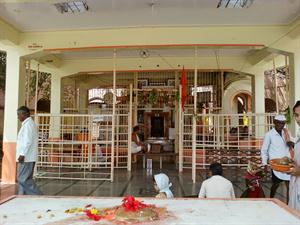 Audumbar is a peaceful place where you can devote your mind to Lord Datta.It's really a great place to visit
Audumbar is a peaceful place where you can devote your mind to Lord Datta.It's really a great place to visit
Audumbar is a famous holly place among devotees of Lord Datta. Shri Dattatraya is a god of Hindu's. Audumbar is located on the bank of river Krishna. Krishna river is considered as a holy river in Maharashtra state because many famous temples are located on the bank of the Krishna river. Audumbar is a place of worship for Lord Datta. The peace present in the Audumbar is amazing. Such a peaceful place it is! Audumbar is a real fun for a trip also. You can swim in the Krishna river (of course, if you know swimming). Its a must visit place for everyone, children, youngsters and devotees.
Pandharpur Vitthal Mandir
Vithoba temple, Pandharpur is the main centre of worship for the Hindu deity Vithoba, believed to be a local form of god Krishna or Vishnu and his consort Rakhumai. It is the most visited temple in Maharastra. The Warkaris start marching from their homes to the temple of Pandharpur in groups called Dindi to reach on Aashadhi ekadashi and Kartiki ekadashi. A dip in the holy river Chandrabhaga on whose banks Pandharpur resides, is believed to have power to wash all sins.All the devotees are allowed to touch the feet of the idol of Vithoba.In May 2014, the temple became first in India to invite women and people from backward classes as priests.
Ganpatipule Ganpati Mandir
Sparkling blue waters, endless stretches of golden or silver sand, sun beams dancing through the swaying palms, waves playing with the sand dunes, a cool breeze whispering sweet nothings in your ear. This is the land of Ganpatipule, one of Maharashtra's almost virgin beaches.
Nestled in the greenery is a nearly 4000 year old landmark the Swayambhu Ganpati Temple (Swayambhu means a self-originated idol, Ganapati). It is flooded by thousands of devotees and tourists every year. Ganpatipule, the Lord of the 'ganas' or army and "pule" means sand dunes. It is one of the 'Ashta Ganapatis' (eight Ganpatis) of India and is known as 'Paschim Dwar Dewata' (Western Sentinel God). Ganapatipule is a small village, serene, sedate and unspoilt. The beach here is still natural and pristine as ever. And travelling by road is an experience by itself. The vast 'Konkan stretch abounds with scenic greenery There are narrow mud-roads, the earth is red and the roofed houses with clean courtyards add a quaint touch to the panorama. The local vegetation includes fruit-bearing trees like mango, betelnut, banana, jackfruit, coconut etc.
Marleshwar
Marleshwar is a place in Sangameshwar subdivision of Ratnagiri district in the Indian state of Maharashtra. Marleshwar is known for the Cave Shiva Temple, where devotees handle venomous snakes: every year thousands of devotees visit the temple and perform ablutions in the nearby Bav river. Dhareshwar is a waterfall on the Bav river which is another tourist attraction of Marleshwar.
On the day of 'Makarsankranti' a celebration of the marriage of Marleshwar and Girijadevi takes place.
On 'Mahashivratri' and 'Tripuri Poornima' there is a fair. Marleshwar name may have come from Maral village .
New Palace Museum
This is an ancient building on the Bahvani Mandap-Kasaba Bavda Road. It was constructed during 1877-1884. Being an excelent specimen of architecture build in black, polished stone, it has been an attraction for the tourists. It has extensive premises with a beautiful garden, fountain and wresling ground.The whole building is eight-angled and has a tower in the middle. The clock on it fixed in 1877. At separate distance there are small towers. On every glass are painted the events in Shivaji's life. There is zoo and a ground lake. Even today, it is the residence of Shreemant Shahu Maharaj.
The ground floor New Palace accommodates the Shahaji Chhatrapati Museum, given over to memorabilia of the Kolhapur rulers.Several tourists from across the country visit the New Palace each year. This musium exibites royal way of existence. It is open on all days save Monday, from 9.30 AM to 6.00 PM, if you're a lover of historical sites, this one is a must visit!.
Siddhagiri Gramjivan Museum (Kanerimath)
This is an ancient building on the Bahvani Mandap-Kasaba Bavda Road. It was constructed during 1877-1884. Being an excelent specimen of architecture build in black, polished stone, it has been an attraction for the tourists. It has extensive premises with a beautiful garden, fountain and wresling ground.The whole building is eight-angled and has a tower in the middle. The clock on it fixed in 1877. At separate distance there are small towers. On every glass are painted the events in Shivaji's life. There is zoo and a ground lake. Even today, it is the residence of Shreemant Shahu Maharaj.
The ground floor New Palace accommodates the Shahaji Chhatrapati Museum, given over to memorabilia of the Kolhapur rulers.Several tourists from across the country visit the New Palace each year. This musium exibites royal way of existence. It is open on all days save Monday, from 9.30 AM to 6.00 PM, if you're a lover of historical sites, this one is a must visit! .
Town Hall Museum, Kolhapur
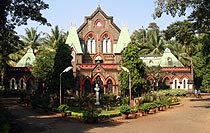
Museum of Kolhapur's Historical paintings and events.Historical ruminants from bramhapuri, old paintings, coins, sculpture remains along with weaponry are displayed here.
The best feature of interest in the city is the Town Hall Kolhpur Museum (Monday closed) on Bhausingji Road, 1km north of the Temple. This sombre Neo-gothic structure was built as the Town Hall in 1872-76 by Charles Mant. This is his first creation in Kolhapur, the only building in pure Neo-gothic style. The frontel porch of the Museum is flanked by towers with steeply pyramidal metal roofs. Two European cannons are on display here; the example dated 1609 is engraved with a relief of the god Mars.
Chandrakant Mandare Art Gallery
Karveernagari is famous as city of art. Two famous Mandare brothers viz. Chandrakant and Suryakant. They had left their own footprints in this domain. Mr. Chandrakant Mandare is known for his portraits showing his love towards nature. This art gallery is established at the residence of Chandrakant Mandare in the 7th lane of rajarampuri. The pictures painted by gifted skill of famous actor Chandrakant Mandare give pleasure to art lovers, viewers.About 15-20 lakh rupees were spent for this beautiful museum of portraits and antique items. Despite spending all this money from his own pocket, Mr. Chandrakant Mandare handed over this precious museum to archaeological department of government and has established new standard of the thoughts of Rajas Shahu Maharaj. This has been a major attraction for tourists.
Panhala Fort
Panhala lies on the Sahyadri Mountain Range and is situated in the Kolhapur district of Maharashtra. It is about 22 km to the northwest of Kolhapur on the Kolhapur-Ratnagiri road and is at an altitude of 3177 feet above sea level.
The Ambarkhana was built by the Marathas and it houses the palace, the administrative division and the granary. The granaries were necessary since grain needed to be stored in case of famines and other calamities. You can also take a look at the Teen Darwaja, which are three gates that provide access to the fort.
Sajja Kothi, which was built by the Mohammedans in 1008 AD. There is a very interesting story related to this fort. Many say that when Siddi Johar, who was a Bijapur general, attacked the fort, Shivaji escaped from the window while Shiva Kashid, in the disguise of Shivaji fought bravely with Siddi Johar.
There is also the Someshwar tank and Andhar Bav. Do not forget to visit the Nayakini Sajja, at Panhala, It is a great thing to see, to understand the warfare strategy used by the Marathas to deceive their foes. It was located next to one of the corners of the fort to hide the ravine or moat. When the enemies tried to climb over the particular corner, they would fall into the ravine. There are also other places in Panhala that you could visit besides all these wonderful places.
Amba Ghat
The location Amba Ghat is quite well known for its beautiful natural surrounding and pleasant cool weather. This is the reason large number of national and international tourists are visiting this tourist centre almost in every season. Its height from sea level is 3100 ft.It is located on Kolhapur-Ratnagiri national highway (NH-204) and this is the highest spot in Kolhapur district. Region beyond this is Konkan. In April and May daytime temperature of this area is 24 to28 c. while at night it 16 to 18c. There are a considerable number of places worth visiting and tourists feel a special pleasure of plucking and eating fruits like java plums or rose-apples.
The best feature of interest in the city is the Town Hall Kolhpur Museum (Monday closed) on Bhausingji Road, 1km north of the Temple. This sombre Neo-gothic structure was built as the Town Hall in 1872-76 by Charles Mant. This is his first creation in Kolhapur, the only building in pure Neo-gothic style. The frontel porch of the Museum is flanked by towers with steeply pyramidal metal roofs. Two European cannons are on display here; the example dated 1609 is engraved with a relief of the god Mars.
Amboli
Amboli is situated approx. 135 km from kolhapur. Nestled amongst the beautiful sahyadri ranges, it is about 630 mts above sea level and is considered one of the prime hill stations in Maharashtra. It is surrounded by thick forests and ravines and tall cliffs. Considering its location and lovely climate it is a perfect picnic spot as well as a 'Retreat' from the crowded cities and towns. There are numerous waterfalls, a sunset point and a holy site close to 'Amboli'. Maharashtra tourism has a resort built for visitors who would like to stay at Amboli.
Sindhudurg Fort
Sindhudurg is a fortress which occupies an islet in the Arabian Sea, just off the coast of Maharashtra in western India. The fortress lies on the shore of Malvan town of Sindhudurg District in the Konkan region of Maharashtra, south of Mumbai. It is a protected monument.
This fort was constructed by Shri Chhatrapati Shivaji Maharaj, Today also we can See His foot & Palm print in fort. The construction was done under the supervision of Hiroji Indulkar, in the year 1656.
Over 4000 mounds of iron were used in the casting and foundation stones were firmly laid down. Construction started on 25 November 1664. Built over a period of three years (1664–67), the sea fort is spread over 48 acres (190,000 m2) with a two-mile (3 km) long rampart, and walls that are 30 feet (9.1 m) high and 12 feet (3.7 m) thick. The massive walls were designed to serve as a deterrent to approaching enemies and to the waves and tides of the Arabian Sea. The main entrance is concealed in such a way that no one can pinpoint it from outside.
At a time when Samudra Gaman (travelling by sea) was banned by scriptures, this construction on an island represents the revolutionary mindset of its engineer. A remain of an iron mould can be seen on the fort.
Amboli is situated approx. 135 km from kolhapur. Nestled amongst the beautiful sahyadri ranges, it is about 630 mts above sea level and is considered one of the prime hill stations in Maharashtra. It is surrounded by thick forests and ravines and tall cliffs. Considering its location and lovely climate it is a perfect picnic spot as well as a 'Retreat' from the crowded cities and towns. There are numerous waterfalls, a sunset point and a holy site close to 'Amboli'. Maharashtra tourism has a resort built for visitors who would like to stay at Amboli.
Rankala Lake
Rankala Lake is one of the great place of kolhapur , where beautiful garden around the lake which entertain you and swing your heart in whirpool. Favorite place of children.
A beautiful lake is named offer the temple of Rankbhairav. an incarnation of lord Shiva, A quarry is formed in to a natural lake after earthquake in 8th / 9th century AD. Well maintained garden & beautiful shalini palace along the lake side attracts every visitor to Kolhapur.
Amboli is situated approx. 135 km from kolhapur. Nestled amongst the beautiful sahyadri ranges, it is about 630 mts above sea level and is considered one of the prime hill stations in Maharashtra. It is surrounded by thick forests and ravines and tall cliffs. Considering its location and lovely climate it is a perfect picnic spot as well as a 'Retreat' from the crowded cities and towns. There are numerous waterfalls, a sunset point and a holy site close to 'Amboli'. Maharashtra tourism has a resort built for visitors who would like to stay at Amboli.
Shalini Palace Kolhapur
Shalini Palace is located very close to the famous Rankala lake.It was built in 1931-1934 and cost approx 8.00 lacs to build. Surrounded by tall palm trees and lush green lawns this palace offers visitors a magnificient place of interest in kolhapur which at the same time provides a wonderful backdrop to the lake. The palace was constructed with italian marble and black stone
The main door has Belgium glass and the inscription work on it reflects the majesty of the Royal family of kolhapur. The columns made of black stone as well as the entrance porch is a architectural masterpiece. In 1987 this palace was converted into the only palace hotel in the state. You can enjoy the reflection of the palace on a moonlit night on the Rankala lake,as well as its serene beauty during sunset. The palace has currently been converted into a 3-star hotel.
Bhavani Mandap Kolhapur
Although smaller in size than Mahalaxmi temple, Bhavani Mandap holds equal importance to the citizens and pilgrims all over the country. It is the temple of goddess Tulja Bhavani (also known as Bhavani) who according to mythology is a guest in her elder sister Mahalaxmi's city Kolhapur.
This palace is just behind Mahalaxmi Temple. This Palace was built around 200 years ago and it was the royal residence. in the year 1813 it was partly destroyed in a fire. later on it was reconstructed. This palace has old fashioned architecture and it is huge in size and strong in construction. Shri Chhatrapati got this Bhavani Temple built for members of his family. This temple and its surrounding area is proof of the royal wealth. Shri Chhatrapati used to conduct his Dasera Court in this temple. A beautiful idol of Goddess Bhavani can be seen in Bhavani chowk.
Goa Beaches
GOA BEACH is one of the most popular travel activities and Goa is the Best Place to see them. Focusing on our natural treasure, the beaches. For a vacation or business trip you'll never want to forget, come to Goa. Summers on the golden sands - winters in the warm waters - Soak in the Goan rains - any season in Goa is pure fun and laid back. Strung along Goa’s 60-mile (100 km) coastline, like a lace frill on the edge of a colorful, skirt are some of the most beautiful beaches in the world- dazzling stretches of golden sand edging the aquamarine expanse of the Arabian Sea.
Goan beaches are magnificent and you will find them extremely difficult to leave. The only problem is which one to head for. An unbroken four-mile (7km) crescent of sun-drenched sand marks the twin beaches of Candolin & Calangute, north of Panjim and the Aguada headland. Calangute became almost a traveler’s cliché in the '60s and early'70s and tourist literature is fond of referring to it as the 'Queen' of Goa's beaches’. Baga, a little further north, is a better beach and a more relaxed place to stay. Despite the concentration of resorts, hotels, beach huts, bars, restaurants, and souvenir stalls, there is innocence here, a freshness of childhood mornings. Farther north, past estuaries of the many streams that gurgle through the land, are a series of secluded beaches. In South Goa at a distance of mere two kilometers are the Colva and the Benaulim beaches. The slow paced beaches are breathtakingly beautiful. The Dona Paula beach, Vagator and Chapora are other beaches worth visiting.
Tarkarli Beach
Tarkarli is a village in Malvan Taluka in Sindhudurg district in the Indian state of Maharashtra. It is tourist destination and an attractive beach. This village is famous for its Ramnavmi Utsav. Ramnavmi is celebrated every year in Mahapurush Temple of the village. This place has gained prominence because of its long and narrow stretch of beach with pristine waters and water sports. On a clear day, one can see the bed unto a depth of 20 ft. It presents a panoramic view with tall 'Shuru' trees in the background. The wide river, the beautiful sailboats and the tiny hamlets situated on the riverbank, add to the picturesque beauty of Tarkarli. Sighting dolphins is not a rare event here. This place fishes throughout the year, the sea during summer and winter and back-waters during the monsoon since the sea water enters this area and also due to safety reasons.
- Nearest railhead is Kudal, 45kms. On konkan Railway.
- Nearest airport is Dabolim (Goa).
- Mumbai-Tarkarli, 546 kms. Kolhapur-Tarkarli, 160 kms. Malvan-Tarkarli 7kms.

